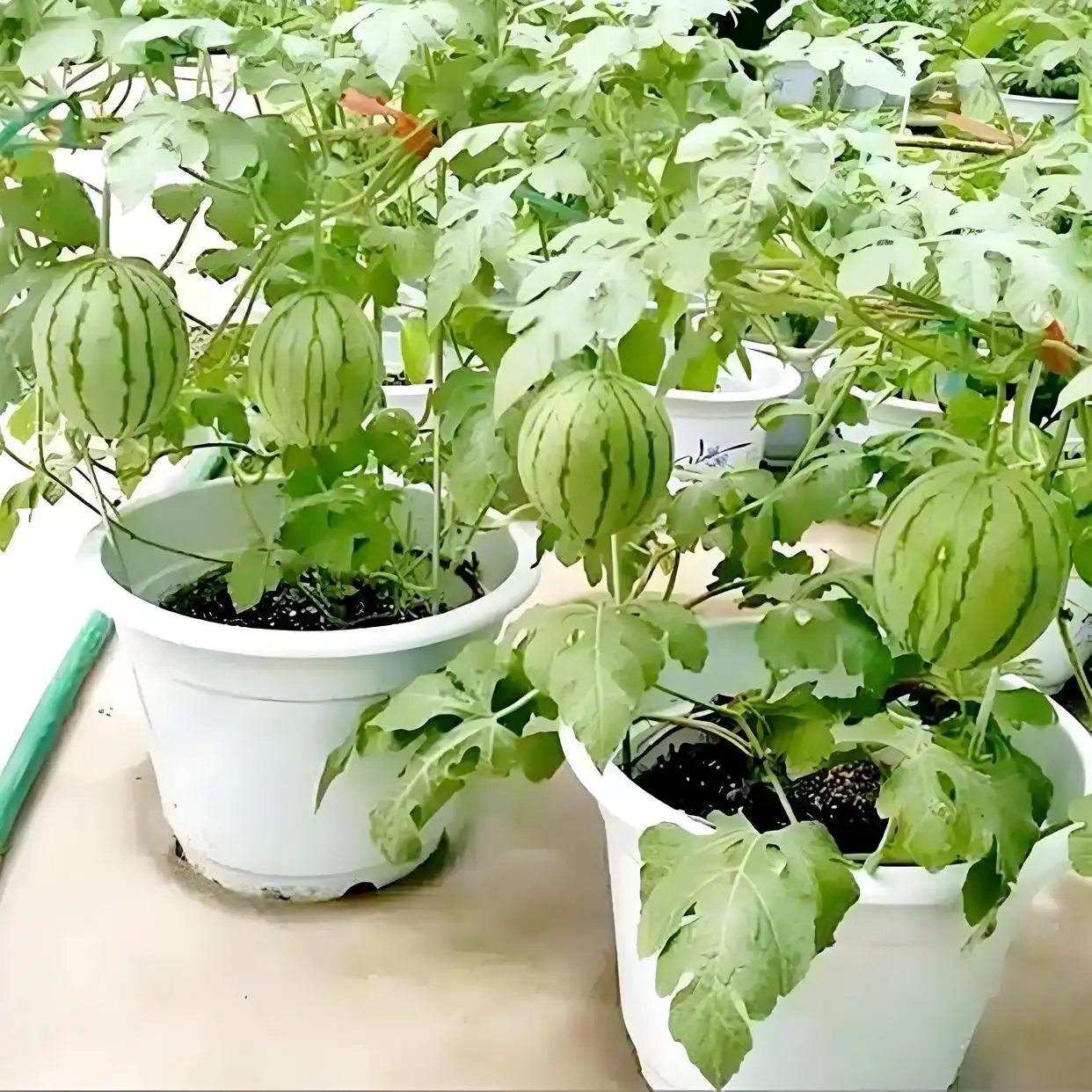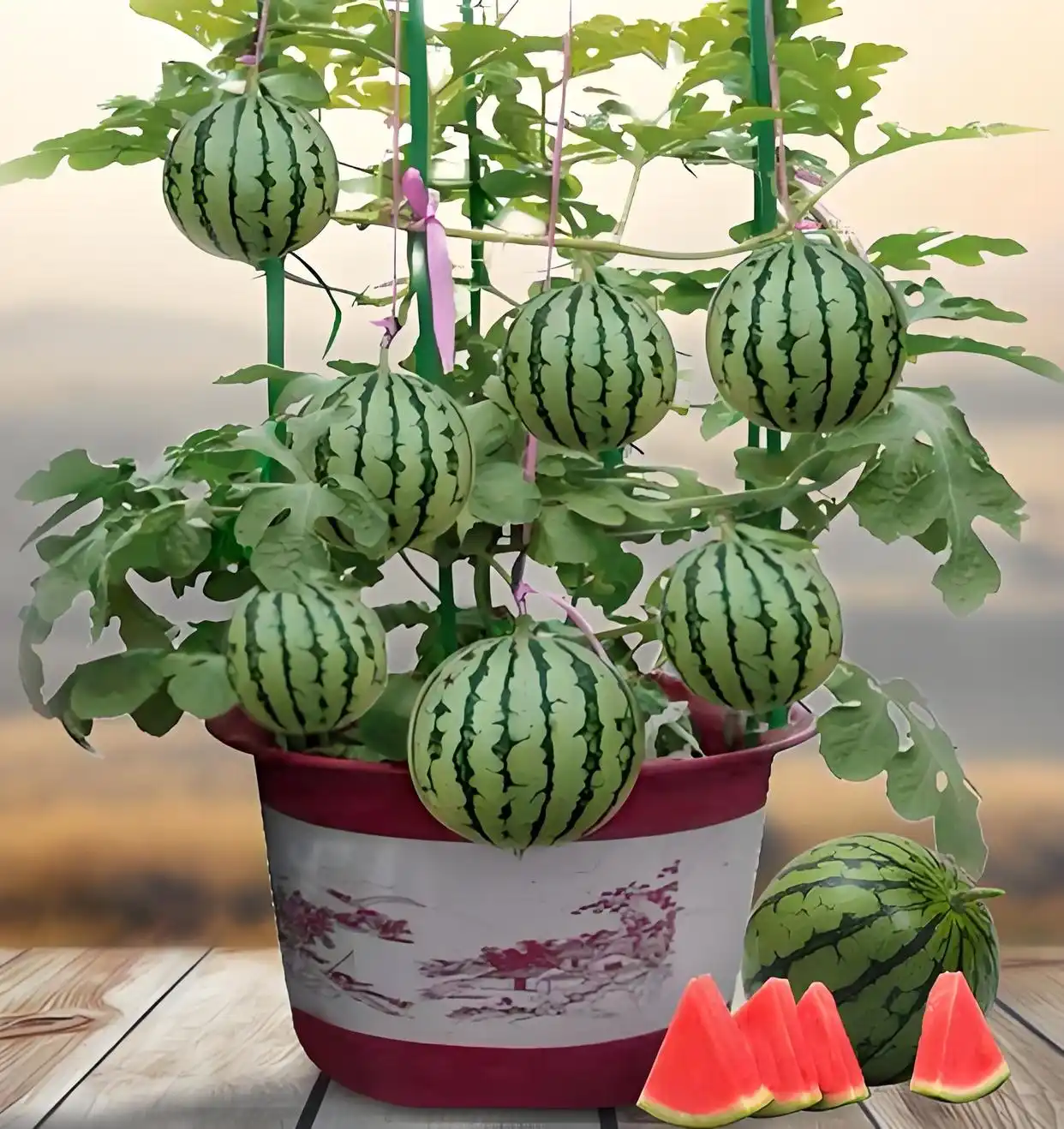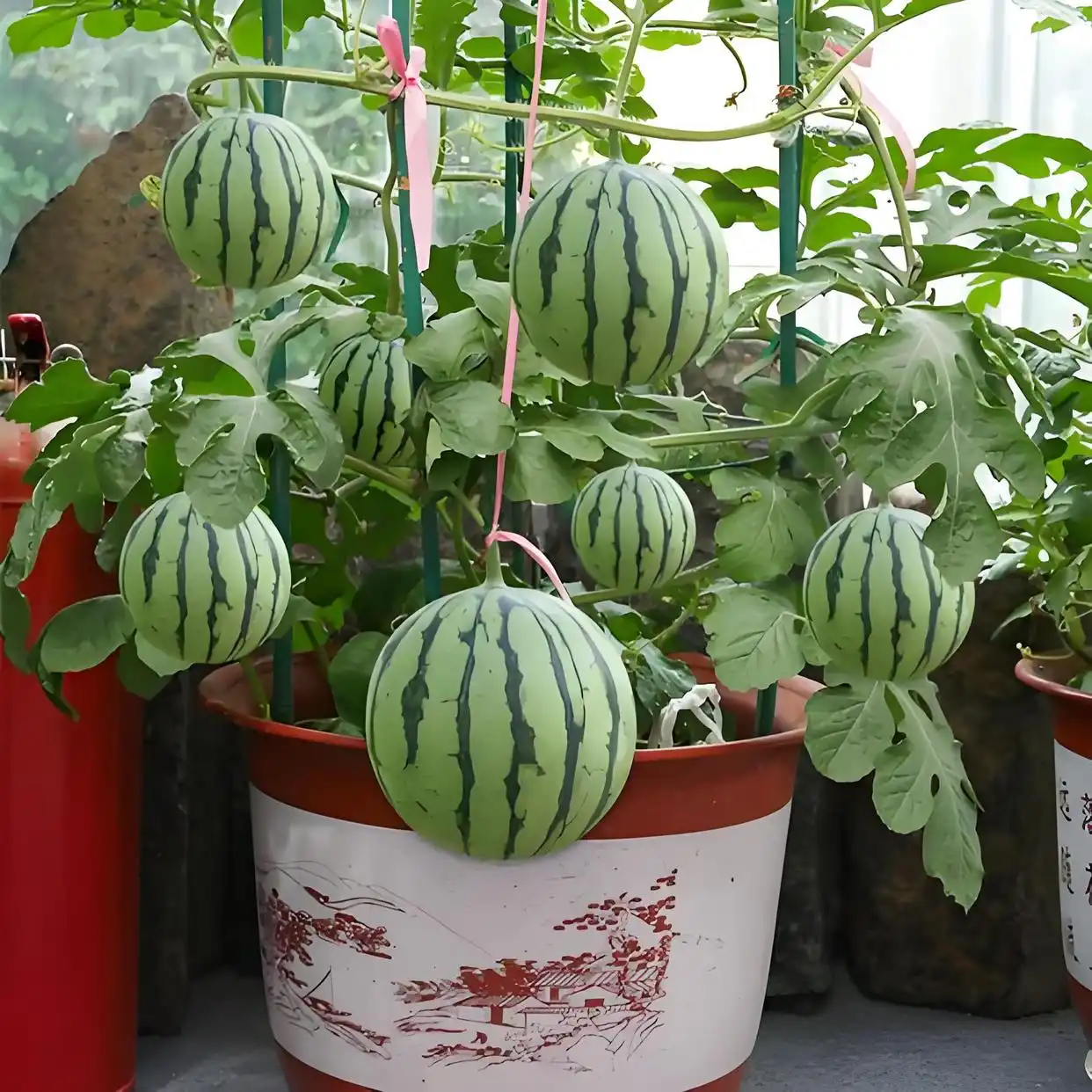Bonsai watermelon is a popular gardening project. It not only decorates your home, but also brings you a touch of coolness in the hot summer. Below, we will introduce in detail how to grow bonsai watermelon and the key points in the management process.
1. Preparation before planting

The planting of bonsai watermelon requires first a suitable growth environment. Choosing alkaline soil is key because watermelons prefer to grow in slightly alkaline soil. You can choose sandy soil or loess and mix it with humus to ensure the loose and fertile soil, as well as good drainage and breathability. If conditions permit, it would be better to choose a slightly larger flowerpot, which would provide more room for the watermelon roots to grow. When filling the soil, some decomposed organic fertilizer can be mixed as base fertilizer to provide initial nutrients for the growth of watermelon.
2. There

are many ways to obtain watermelon seeds by sowing and seedling cultivation. They can be seeds left behind when eating watermelon, or they can be purchased directly on the market. In order to improve the germination rate of seeds, the seeds need to be soaked in water for about 4 hours before sowing. After that, sow the seeds in the soil that has been watered and gently cover with a layer of dry soil. In order to ensure that each watermelon seedling has enough growth space, the spacing between two seeds should be controlled to more than 20 centimeters during sowing.
If you want to manage each watermelon seedling more finely, you can choose to use disposable water cups or mineral water bottles to make small planting boxes. This not only provides an independent growing environment for each watermelon seedling, but also facilitates management and movement.

3. Daily management of
light: Watermelons are light-loving plants, so bonsai watermelon require sufficient sunshine. If you plant it indoors, you should place it in a sunny place or use fluorescent lights to supplement the light.
Water management: Watermelon contains high water, so it requires a proper amount of water supply during growth. In summer, depending on the specific environment of the balcony or terrace, water is poured about every 3 to 4 days. However, it should be noted that too much water should not be watered to prevent root rot. Keep the soil moist. Too wet or too dry will affect the growth of watermelon.
Fertilization: During the growth process of watermelon, timely fertilization is essential. You can choose organic fertilizers, which not only provide nutrients to plants, but also improve the structure of the soil. However, excessive fertilization should not be recommended. Reasonable fertilization should be carried out according to the soil conditions and the growth conditions of watermelon. Usually, fertilizer can be applied every 10 days or so. In the later stage of growth, ordinary compound fertilizers can be switched to.

Management of branches and vines: As watermelon grows, it will appear to climb vines. At this time, it is best to insert some branches or bamboo poles into the soil to help the rattan climb. If the number of canes is too high, they can be pruned appropriately to reduce nutrient consumption, so that the plants can absorb enough nutrients and eventually produce sweet and delicious watermelons.
4. Judgment of picking timing
The picking time of small watermelons is affected by many factors, including variety, climate, planting techniques, etc. Generally speaking, it takes about 100 to 120 days from sowing a small watermelon to maturity. For early-maturing varieties, if they are sown in mid-March, they can be harvested in about mid-to-early July. For late-maturing varieties, if sown in mid-to-late April, harvesting may be carried out from late July to early August.
In addition, geographical location will also affect the ripening time of watermelon. In the northern region, the main picking season for small watermelons is usually from July to September in the summer. In the south, due to the warmer climate, the picking season of small watermelons may be earlier, about between June and August.
In general, regardless of differences in specific varieties and geographical locations, the general picking season for small watermelons is roughly between June and September every year. However, the specific picking time still needs to be judged based on the growth status and appearance of the watermelon. Generally speaking, when a watermelon presents a uniform color and makes a dull sound when knocked, it means that it is ripe.
Although the planting and management of bonsai watermelon requires a certain amount of patience and care, as long as the correct methods and techniques are mastered, you can fully grow delicious small watermelons on your own balcony or terrace. Every link from sowing to picking requires careful care and management, but the final harvest will definitely make people feel satisfied and happy.